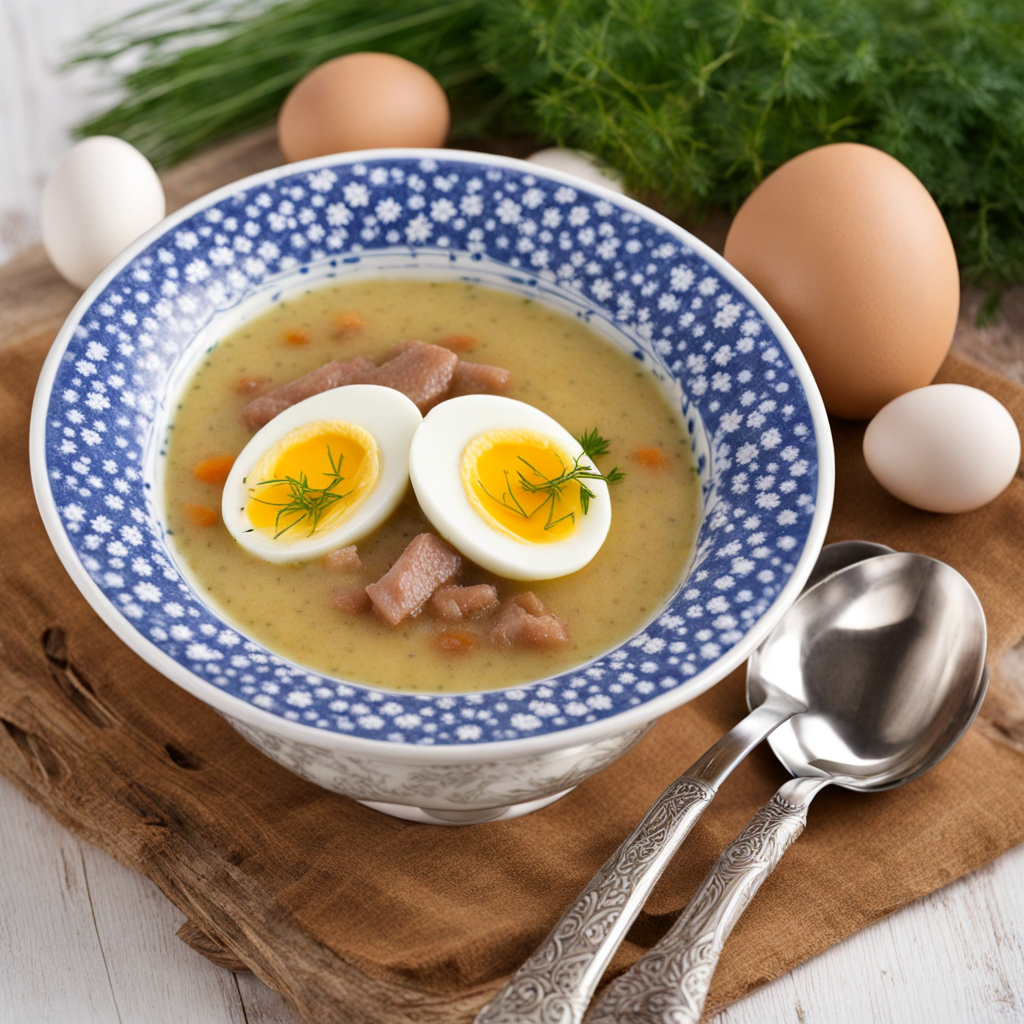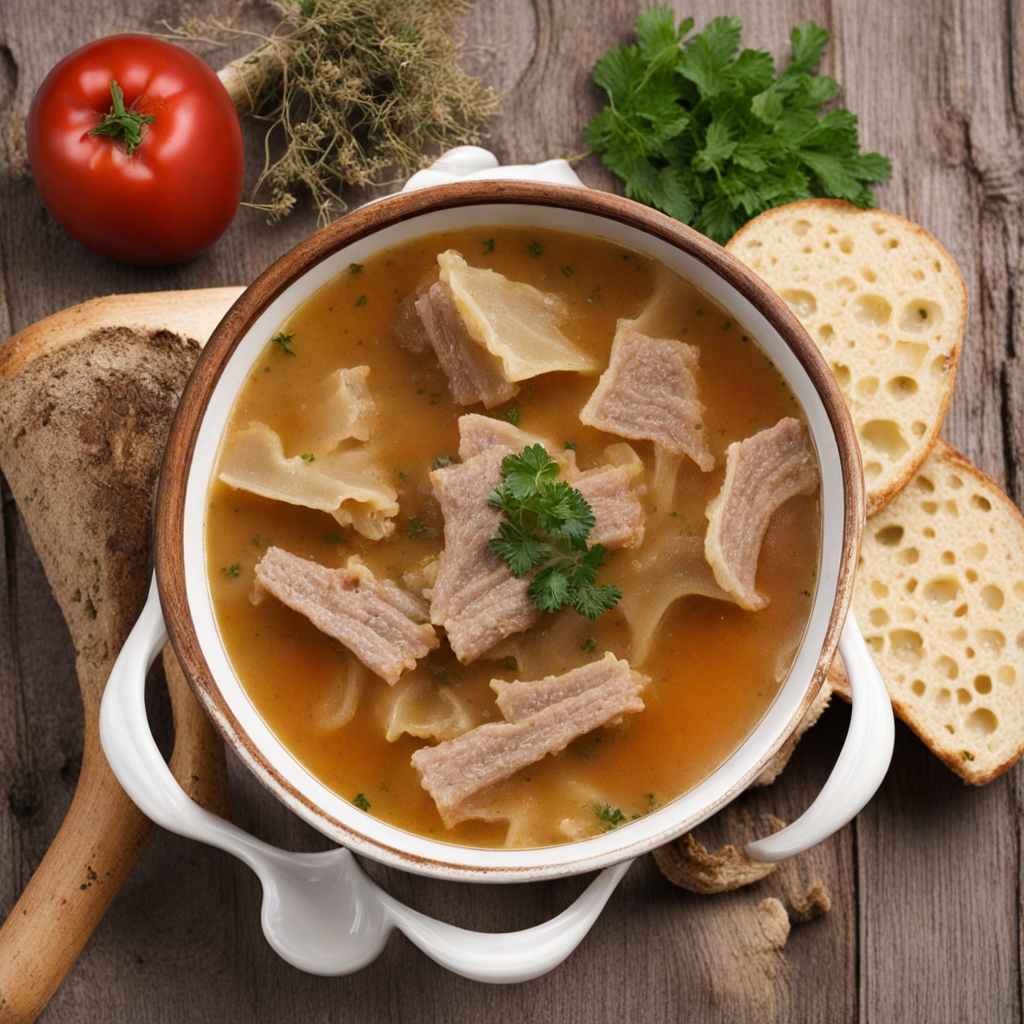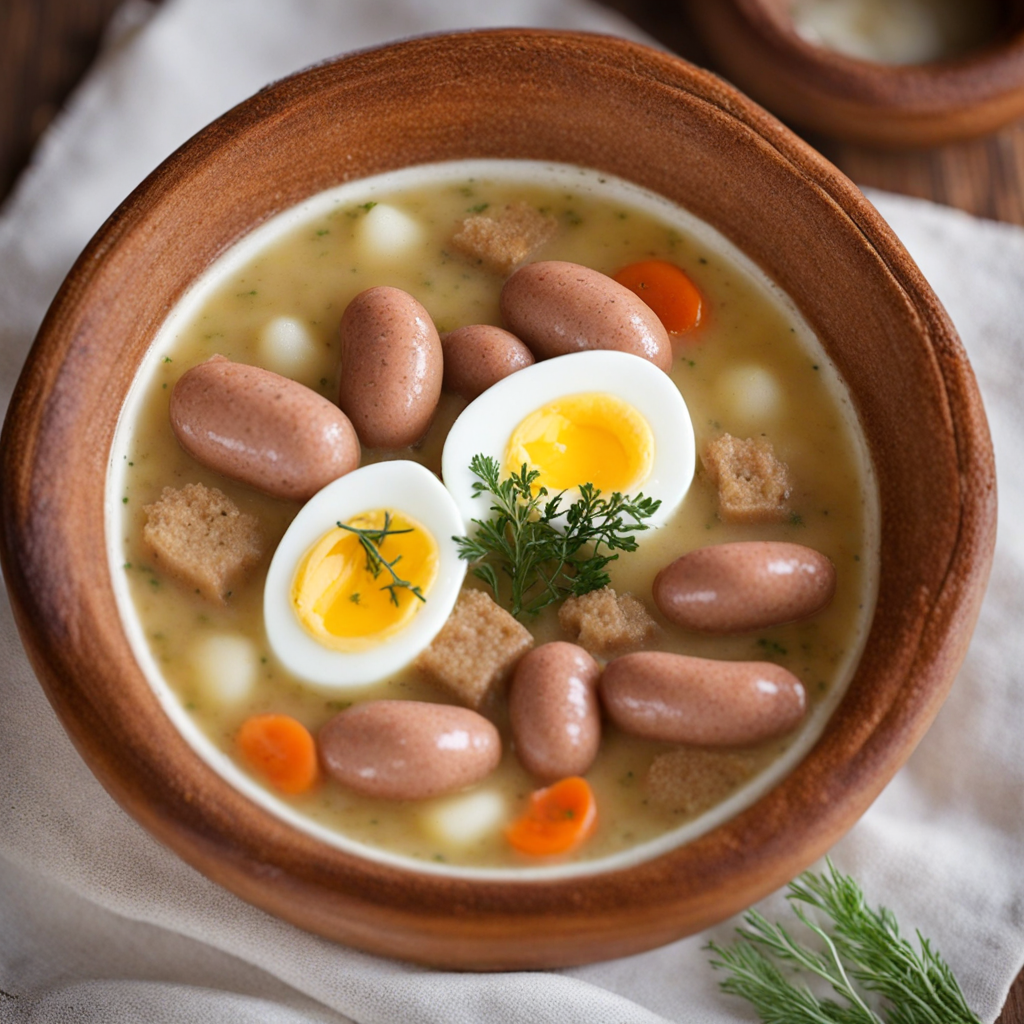Kotlet Schabowy
Kotlet Schabowy is a beloved Polish dish that exemplifies comfort food at its finest. This breaded pork cutlet is typically made from a boneless pork loin, pounded thin and coated in a mixture of flour, egg, and breadcrumbs. The result is a crunchy, golden exterior that encases juicy, tender meat. Often served with a side of mashed potatoes or buttery dumplings, and a sprinkle of fresh parsley, each bite offers a delightful contrast of textures and flavors that makes it a staple in Polish cuisine. The preparation of Kotlet Schabowy is both an art and a tradition. The meat is seasoned simply with salt and pepper, allowing the natural flavors to shine through. The breading process is crucial, as the cutlet is carefully dipped in flour, then in egg, and finally coated with breadcrumbs, which can be seasoned with herbs for added flavor. Once fried to perfection, the cutlet becomes a golden-brown masterpiece, enticing both the eyes and the palate. This dish is often accompanied by a variety of sides that enhance its hearty profile. Commonly paired with a refreshing cucumber salad or pickled beets, the acidity of these sides cuts through the richness of the fried cutlet. For a more indulgent experience, a drizzle of mushroom gravy or a dollop of sour cream can elevate the meal, making Kotlet Schabowy not just a dish, but a celebration of Polish culinary tradition.
How It Became This Dish
The History of Kotlet Schabowy: Poland's Beloved Breaded Cutlet Origins and Early Influences Kotlet Schabowy, a quintessential element of Polish cuisine, is a breaded pork cutlet that has become synonymous with comfort food in Poland. Its roots can be traced back to the influence of various culinary traditions that have shaped Polish gastronomy over the centuries. The dish is believed to have been inspired by the Austrian Wiener Schnitzel, which itself was likely influenced by the Italian cotoletta. The concept of breaded meat cuts can be seen throughout Europe, but each region has adapted the dish to reflect local tastes and ingredients. The introduction of the breaded cutlet to Poland occurred during the partitions of the late 18th and early 19th centuries, a period when Polish territories fell under the rule of Austria, Prussia, and Russia. This era brought with it a fusion of culinary techniques and flavors, with Austrian and German influences particularly prominent in Polish kitchens. As the dish evolved, it became not just a meal but a symbol of resilience and cultural identity for the Polish people during times of upheaval. Cultural Significance Kotlet Schabowy holds a special place in the hearts of many Poles. It is often regarded as a comfort food, evoking memories of family gatherings and Sunday dinners. Traditionally served with mashed potatoes and a side of sauerkraut or a fresh salad, the dish embodies the warmth of home-cooked meals and familial bonds. It is a staple at holiday feasts, birthday celebrations, and casual weekday dinners alike. The significance of Kotlet Schabowy extends beyond its role as a meal; it has become a cultural icon in Poland. The dish is frequently featured in Polish literature, media, and folklore, symbolizing the essence of Polish identity and hospitality. In a country where food is deeply intertwined with cultural heritage, Kotlet Schabowy represents the comfort of tradition and the importance of sharing meals with loved ones. Evolution Over Time As Poland navigated the tumultuous periods of the 20th century, including World War II and the subsequent communist regime, the preparation and presentation of Kotlet Schabowy adapted to reflect the changing times. During the war, rationing meant that families had to make do with less, but the desire for comfort food persisted. The dish became a way for families to maintain a semblance of normalcy and tradition during difficult times. In the post-war era, as Poland transitioned to communism, the availability of certain ingredients fluctuated. While pork remained the primary protein, the use of breadcrumbs varied, with some households utilizing stale bread or even flour mixtures due to shortages. Despite these challenges, the core of Kotlet Schabowy remained unchanged; it was a dish that brought people together, regardless of the circumstances. In the late 20th century, as Poland began to open up to the West and embrace culinary globalization, Kotlet Schabowy experienced a renaissance. Chefs began experimenting with variations of the traditional recipe, incorporating different meats such as chicken or turkey and utilizing alternative breading techniques. Modern interpretations emerged, featuring creative accompaniments like gourmet sauces or inventive side dishes, reflecting the evolving tastes of contemporary Polish society. Ingredients and Preparation The classic Kotlet Schabowy is typically made from pork loin, which is pounded thin to ensure tenderness. The meat is then seasoned, dredged in flour, dipped in beaten eggs, and coated with breadcrumbs—preferably homemade from stale bread for optimal texture. This process not only adds flavor but also creates a satisfying crunch upon frying. Traditionally, the cutlet is pan-fried in lard or oil, resulting in a golden-brown exterior that contrasts beautifully with the juicy interior. The simplicity of the ingredients allows the quality of the pork to shine, making it essential to select fresh, high-quality meat. Accompaniments to Kotlet Schabowy can vary, but common pairings include mashed potatoes or boiled potatoes, which serve as a canvas for the rich flavors of the cutlet. A side of cooked or pickled cabbage, be it sauerkraut or a fresh salad, adds a refreshing contrast to the dish. Additionally, a dollop of tartar sauce or a squeeze of lemon can elevate the experience, enhancing the flavors of the fried cutlet. Kotlet Schabowy Today In modern Poland, Kotlet Schabowy remains a beloved dish that transcends generations. Its presence is felt in homes, restaurants, and even fast-food establishments, where it is often served as a nostalgic reminder of simpler times. Polish expatriates around the world cherish the dish, preparing it as a way to connect with their cultural roots and share their heritage with others. Moreover, the dish has found its way into international culinary circles. As chefs and food enthusiasts explore global cuisines, Kotlet Schabowy has garnered attention for its delicious simplicity and unique flavor profile. This exposure has sparked interest in Polish cuisine, leading to increased appreciation for traditional dishes and their cultural significance. Conclusion Kotlet Schabowy is more than just a breaded cutlet; it is a testament to the resilience and adaptability of Polish culture. Its journey from an Austrian-inspired dish to a beloved national treasure reflects the rich tapestry of Poland's history, marked by periods of hardship and triumph. As it continues to evolve in contemporary kitchens, Kotlet Schabowy remains a symbol of comfort, family, and cultural pride, inviting everyone to savor a piece of Poland's culinary heritage. Whether enjoyed at a family meal or in a bustling restaurant, this dish will always hold a cherished place in the hearts and homes of those who call Poland home.
You may like
Discover local flavors from Poland







